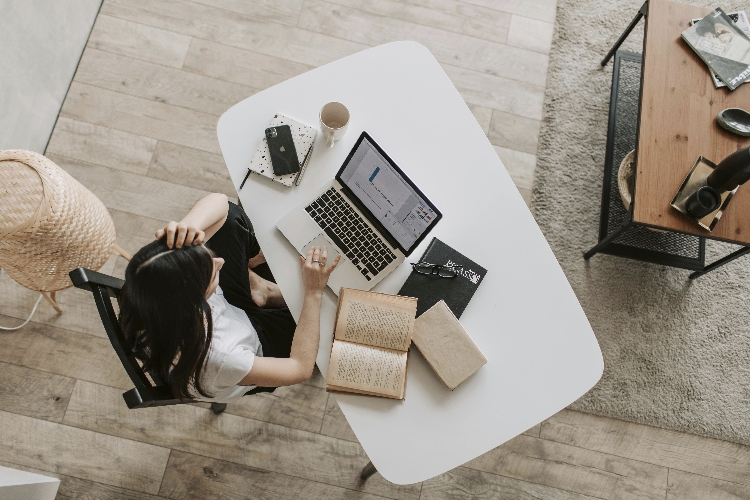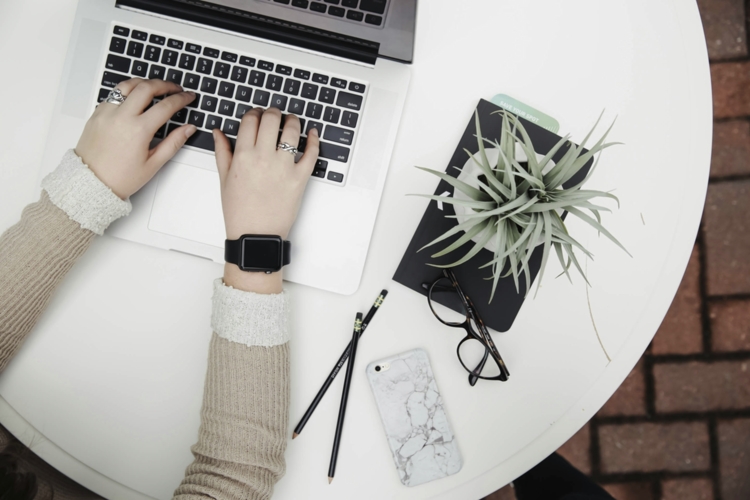Space for Change: Designing Your Workspace for Advocacy Success
RAFT Team, May 13, 2024
Working from home can be difficult, but thoughtfully designing your workspace can make it much easier. A well-designed work area can boost your productivity, improve mental clarity, increase your creativity, and enhance your work-life balance. And when all these positive things are flowing, you'll reduce burnout! In this article, we’ll explore the importance of designing your workspace. We'll also discuss ways you can cultivate a space that empowers you to love your job when you’re working and love your life when you’re not.
Establish a Dedicated Workspace
If you’re working from home, create a designated area that is solely dedicated to work-related activities. A designated room works great. You can also use the corner of a room, or even a specific desk or table for all your work-related tasks. Set the expectation that when you're in this space, you're focused on work, and when you leave it, you're off the clock. This mental discipline and expectation allows your mind to enter a specific headspace to focus on your advocacy work.
Set Clear Start & End Times
When you work remotely, it’s easy for things to come up that delay your start time. Getting out of bed, eating breakfast, doing laundry, checking the mailbox… these are all tasks that can distract or delay. To reduce these distractions, commit to “clocking in” at a specific time each day.
Stick to specific start and end times for your workday to create a clear boundary between your work and personal time. It also helps any loved ones to know they can expect you to be unavailable during these hours. It also makes it easier to push through until your predetermined end time and then you’re off for the day! When you start late, you end late, and no one likes this!
Use Physical Objects as Boundary Markers
Place physical objects such as your open laptop, a work bag, or even a door sign to signal visually that you are in work mode. When you are off duty, close the laptop, put away your bag, or remove the sign. You might only have the lamp on during work hours, or fairy lights on over your workspace when you’re not working. These cues give you a physical reminder that you’ve given yourself permission to be fully engaged in work or fully engaged in something else. No guilt!
Create Rituals to Transition Between Work & Personal Time
Establish rituals or activities that help you transition from work mode to personal time. Perhaps you review what you’ve accomplished for the day and shift anything left incomplete to tomorrow’s to-do list. Your shut-down routine could be something as simple as changing out of your work clothes, going for a walk, or engaging in a brief mindfulness practice. Whatever you choose to do to close out your day, this intentional time to shift your headspace and mindset can help you lean more freely into what’s coming next.
Implement Digital Boundaries
Set boundaries around your digital devices to minimize work-related distractions during personal time. Try turning off email notifications, setting specific times for checking work-related messages, or using apps to block distracting work notifications during personal hours. You can even setup up specific Focus or Do Not Disturb rules on your Android or iPhone to remove work notifications after work hours. (You may even want to try a digital detox for an evening or two.)
Build No-Work Zones
Designate certain areas of your home, such as the bedroom or dining area, as "no-work zones" where you never allow work-related activities. This helps create physical boundaries between work and personal spaces. It may seem silly at first, but when followed, these decisions lower your stress and give you freedom to stop thinking about work when you’re on personal time. But be gentle with yourself. Boundaries are difficult!
Establish Clear Communication with Family or Roommates
Designing a workspace is just as much about setting expectations for others as it is for you. If you share your living space with others, communicate your work schedule and boundaries clearly with housemates. Set expectations around when you need privacy and focus for work and when you're available for social interactions. It might take some time and reinforcement, but sticking to your boundaries will help you be efficient during work hours and at ease and present when not working.
Create Physical Barriers
Use physical barriers such as room dividers, curtains, or bookshelves to create a separation between your work area and other areas of your home. This helps delineate boundaries and reduce distractions during work hours. Physical barriers can also hide your workspace when you’re not working. Closing a door, hiding your desk behind a screen, or putting your laptop in a drawer can give you complete freedom to stop thinking about work or being reminded of it when you aren’t sitting at your desk.
When you're intentional about designing your workspace, your work / life balance improves, as does your satisfaction with your job. You're productive during work hours, and more relaxed during your personal time.







